KAS Astrology Lessons
Krushnaji had written a series of lessons on KAS during 2000-2002 and he made them available to KAS Yahoo Group members. Mrs. Donna Quinn was kind enough to proof read the lessons and fix typos and grammar to make the lessons easily comprehensible. I am reproducing the KAS lessons here to support new KAS students. The only change I have made is to provide screen shots of charts from online KAS software which uses an improved KAS ayanamsa value than the one that students were using during 2000-2002.
Lesson 1: What is the Ashtakavarga System?
By employing the Ashtakavarga system along with other principals, the following things can be determined with great accuracy:
- Predicting the general strengths of the planets and the houses
- Anticipating certain important events in a person’s life
- Forecasting dasha results
- Overall life readings
- Profession of the person
- Timing events for important results
- Day to day power of the horoscope and results
- Marking the evolution of the achievements in the life
- Prasna Charts
- Political and Social forecasting
- Transit results
BHINNASHTAKAVARGA
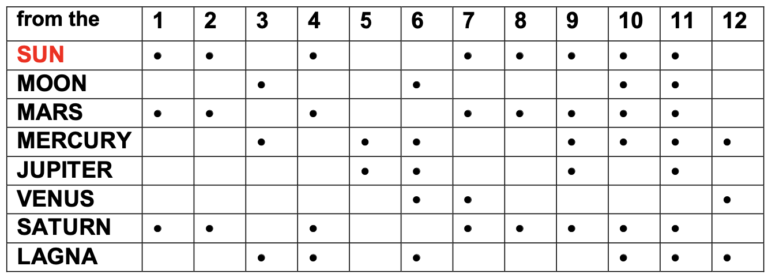
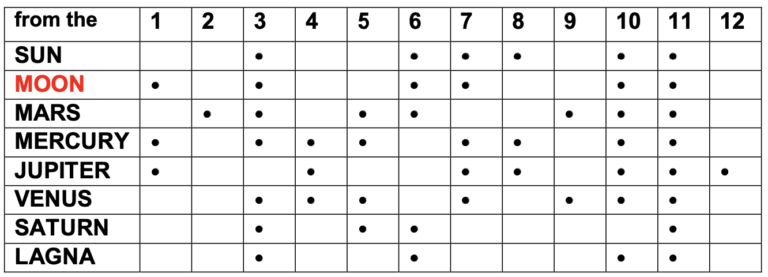
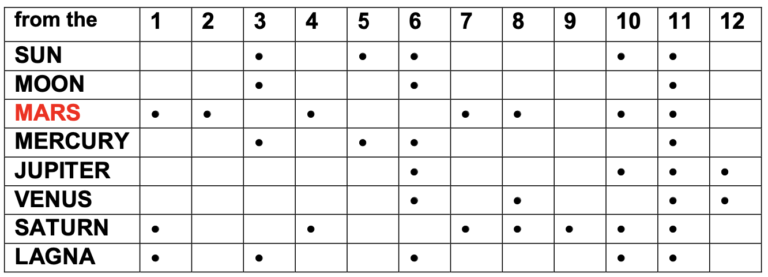
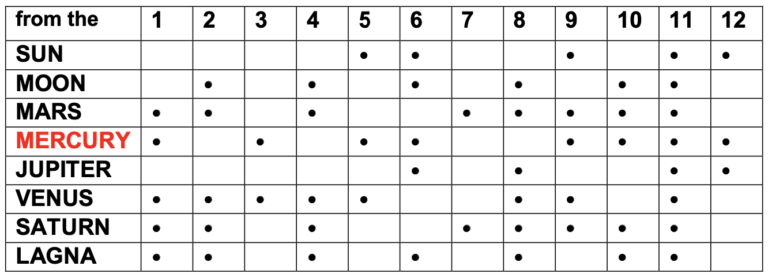
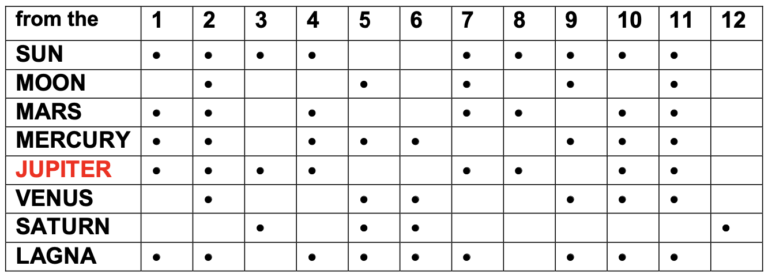
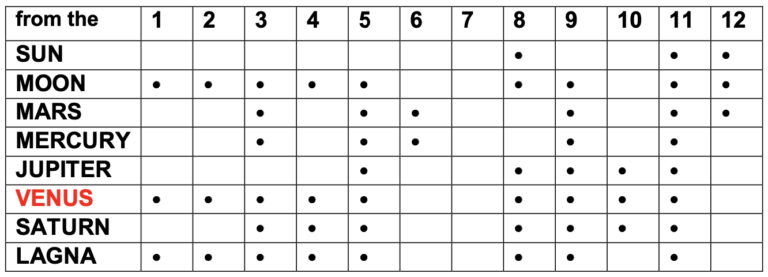
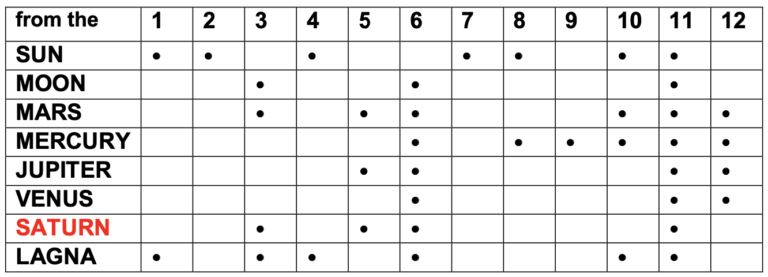
ASHTAKAVARGA TABLE
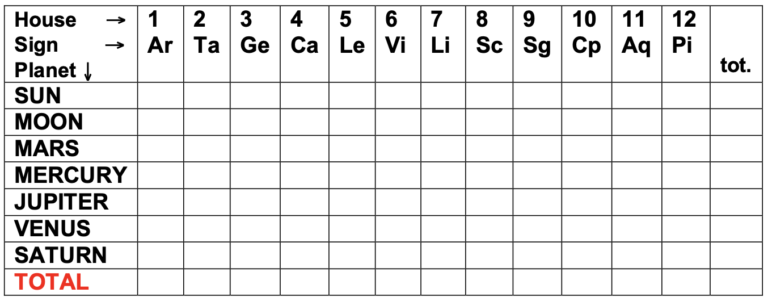
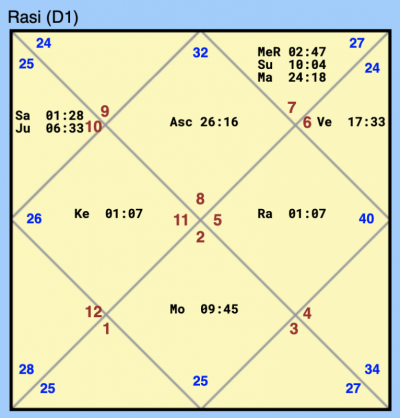

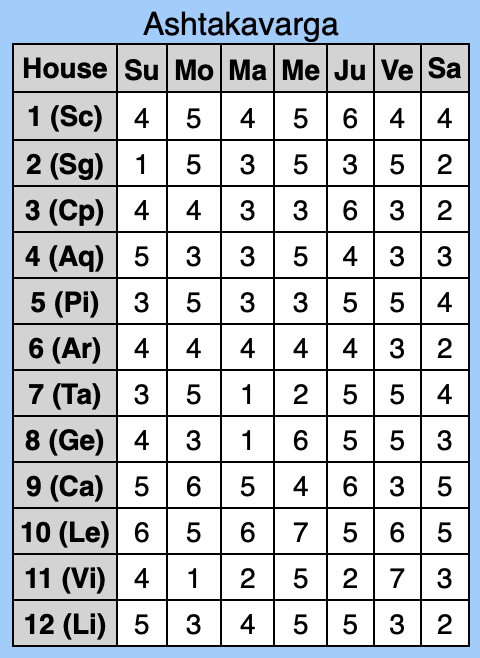
Here we can see that all the planets contribute various points to each house. Remember that minimum points can go as low as zero and the maximum can go as high as 8. No planet can have more than 8 points to a house.